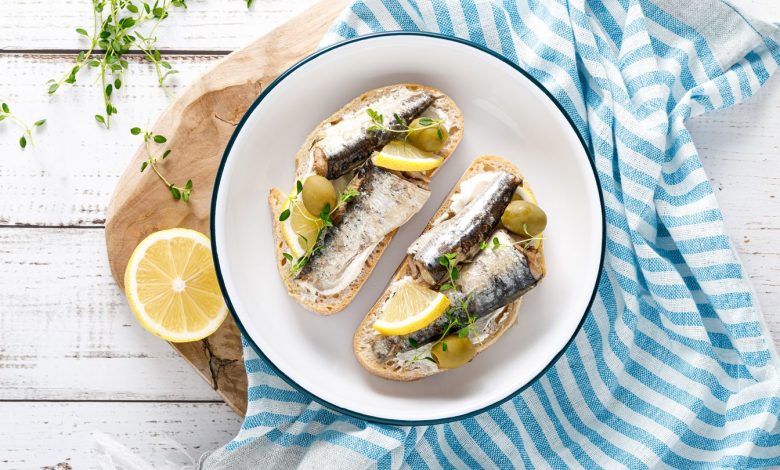Swapping Red Meat with Anchovies and Sardines Could Save Hundreds of Thousands of Lives Globally

[ad_1]
Consuming more small fish like herring, anchovies, and sardines in place of red meat could have a major impact on preventing premature deaths worldwide.
“Red meat consumption is associated with elevated risk of mortality from noncommunicable diseases, whereas forage fish could prevent these diet-related diseases,” including conditions like heart disease, stroke, diabetes, and colon cancer, says lead study author Shujuan Xia, a research associate with the National Institute for Environmental Studies in Tsukuba, Japan.
In the case of the United States, Xia notes that replacing 16 percent of red meat with forage fish in 2050 may reduce deaths from coronary artery disease by about 15 percent, and deaths from stroke, diabetes, and colorectal cancer by 2 to 3 percent.
Why Smaller Fish Are a Good Alternative to Meat
“There have been numerous studies that have demonstrated the benefits of omega-3 rich foods such as herring and sardines for heart health,” says Kate Donelan, RD, a registered dietitian with Stanford Healthcare in California. “Omega-3 fatty acids have been shown to reduce inflammation, improve cholesterol levels, and decrease the risk of heart disease. Similarly, reduced red meat has been associated with lower risks of heart disease and other chronic conditions.”
Why Smaller Fish May Be Healthier Than Larger Fish
Xia and her collaborators decided to look at these small forage fish because they are highly nutritious, environmentally friendly, often low-cost, and the most abundant fish species in the ocean.
In addition, Christine Ryan, RDN, a registered dietitian-nutritionist in Seattle, highlights that larger fish can be less healthy compared with smaller ones because they accumulate more contaminants, such as mercury, which can build up in the body over time and result in health problems.
“One reason to focus on smaller fish is that they are safer than larger fish,” says Ryan, who was not involved with the research. “They don’t live as long, so they don’t have enough time to absorb heavy metals that are in the environment, making them safer to eat.”
A Way to Help the Environment
The environment also benefits when replacing red meat consumption with this type of fish. The study authors explain that livestock produce significant amounts of greenhouse gas emissions, such as carbon dioxide and methane, which contribute to global warming.
The Monterey Bay Seafood Watch program further points out that forage fish have a low carbon footprint compared with other animal food sources. “It’s important to note however, that not all forage species have the same environmental impact,” says a Seafood Watch spokesperson.
To learn the latest environmentally sustainable seafood options, check out the recommendations and buying guides offered by Seafood Watch. The organization says that canned forage fish are readily available at grocery stores, or and fish markets sell fresh varieties in some locations.
Projecting the Impact of Switching to Forage Fish
For this analysis, scientists looked at datasets of red meat projections in 2050 for 137 countries and forage fish catches. They then replaced the red meat consumption in each country with forage fish from marine habitats, without exceeding the potential supply of forage fish.
Their assessment revealed that forage fish may replace only about 8 percent of the world’s red meat due to its limited supply. Their calculations found that such a substitution could prevent up to 750,000 deaths from diet-related diseases, and avert 8 to 15 million years of life lived with a disability — most of which are concentrated in low- and middle-income countries.
This food swap could also cut global deaths from coronary heart disease, stroke, diabetes, and bowel cancer by 2 percent in 2050, according to Xia and her team.
Obstacles to Overcome
The researchers recognize that several barriers may prevent the full health benefits of forage fish from being realized, including forage fish being directed to fish meal and oil processing, and climate change.
Donelan, who was not involved in the study, cautions that establishing a greater worldwide reliance on these fish as a food source may contribute to overfishing and may exacerbate food insecurity in regions where these fish are essential for local diets.
The study authors recognize that getting people to eat more fish may be difficult in some cultures that are not accustomed to eating this type of seafood.
“Forage fish like herring and sardines may not be as popular in the United States compared to other seafood options like salmon or tuna, but some potential ways — like health initiatives, nutrition education, and recipe development — may help promote eating these types of fish,” says Xia.
Ryan admits that a beef-centric population like in America may find it challenging to eat more fish, but she urges people to experiment and try different ways of incorporating these types of fish into their diet.
“It’s tough getting everyone to love fish,” she says, “but if you can include more small fish in your diet, they really are one of the best sources for increasing omega-3 oils to lower cardiovascular risks.”
[ad_2]




